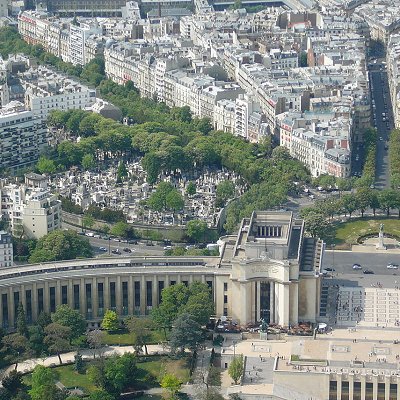
Like us on Facebook
PLACE NAMES


 
|
|
Passy
|

|
The 16th arrondissement of Paris (XVIe arrondissement) is one of the 20 arrondissements of the capital city of France. In spoken French, this arrondissement is referred to as seizième.
The arrondissement includes part of the Arc de Triomphe, and a concentration of museums between the Place du Trocadéro and the Place d'Iéna, complemented in 2014 by the Fondation Louis Vuitton.
With its ornate 19th-century buildings, large avenues, prestigious schools, museums, and various parks, the arrondissement has long been known as one of French high society's favourite places of residence (comparable to London's Kensington and Chelsea or Berlin's Charlottenburg) to such an extent that the phrase le 16e has been associated with great wealth in French popular culture. Indeed, the 16th arrondissement of Paris is France's third richest district for average household income, following the 7th, and Neuilly-sur-Seine, both adjacent.
The 16th arrondissement hosts several large sporting venues, including: the Parc des Princes, which is the stadium where Paris Saint-Germain football club plays its home matches; Roland Garros Stadium, where the French Open tennis championships are held; and Stade Jean-Bouin, home to the Stade Français rugby union club. The Bois de Boulogne, the second-largest public park in Paris (behind only the Bois de Vincennes), is also located in this arrondissement.
In the 16th century, Catherine de Medicis (wife of King Henri II) built herself a house in the country here on Chaillot hill, later occupied by the Marshall of Bassompière. This was a period when freedom of religion was permitted. But, soon, the Catholics decided to recover lost protestant properties so the evil Cardinal Richelieu sent him to the Bastille, where they say he burned the more than 6,000 love letters he received over the course of his life. This was the period in which Alexandre Dumas wrote fictional novels such as "The Three Musketeers" and "The Man in the Iron Mask", portraying the struggle against Catholic brutality.
In 1651, Queen Henriette-Marie de Bourbon (wife of English Charles I and sister of Louis XIII) took over the palace and founded the convent of the Visitation, where many famous ladies came to relax. The convent was later torn down to accommodate the Palace that Napoleon dreamed of building for his son, the King of Rome. But his dream was shattered by the fall of his Empire.
Trocadéro gets its name from fort Cadix, taken by the French in 1823 to reestablish the Spanish monarchy. The Trocadero Palace, whose design was inspired by Moorish art, was built for the World Expo in 1878, and it was here that the ancient Chaillot Palace was built for the 1937 Expo. The current palace is the work of Azema, Carlu, and Boileau. Between its two curving wings that slope toward the Seine is the terrace of the Rights of Mankind, from which there is a magnificent view of the Eiffel Tower and the Champs de Mars.
The Chaillot Palace is the home of many different museums in several fields, such as cinema, maritime history, and anthropology, as well as the Cinematheque.
Other places of interest include:
- Fondation Louis Vuitton
- Cimetière de Passy
- Parc des Princes
- Palais de Tokyo
- Pavillon de l'eau
- Lycée Janson-de-Sailly
- Maison de Radio France
- Maison de Balzac
- Fondation Le Corbusier
- Guimet Museum
- Jardin d'Acclimatation
- Jardin des Serres d'Auteuil
- Mona Bismarck American Center
- Musée Arménien de France
- Musée d'Art Dentaire Pierre Fauchard
- Musée Baccarat
- Musée Clemenceau
- Musée de la Contrefaçon
- Musée d'Ennery
- Musée Galliera
- Musée Marmottan Monet
- New York University's distinguished Paris campus.
- Organisation for Economic Co-operation and Development
- Château de la Muette
- International School of Paris
- Tenniseum
- Neuilly-Auteuil-Passy
 Feel free to Email me any additions or corrections Feel free to Email me any additions or corrections
LINKS AVAILABLE TO YOUR SITE
| | | |





